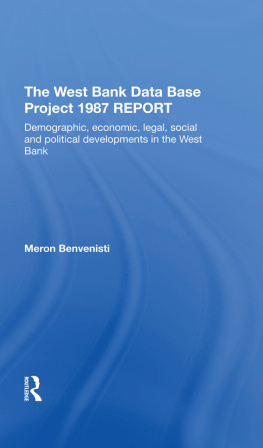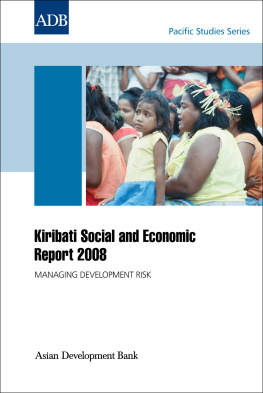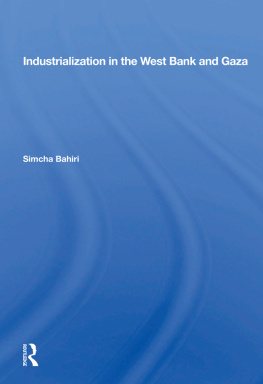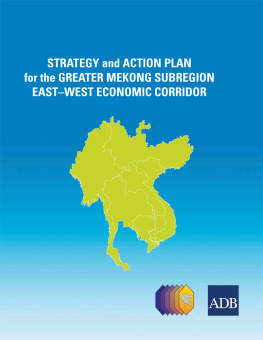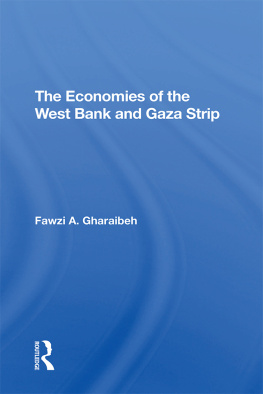First published 1987 by Westview Press
Published 2019 by Routledge
52 Vanderbilt Avenue, New York, NY 10017
2 Park Square, Milton Park, Abingdon, Oxon OX14 4RN
Routledge is an imprint of the Taylor & Francis Group, an informa business
Copyright 1987 by Taylor & Francis
All rights reserved. No part of this book may be reprinted or reproduced or utilised in any form or by any electronic, mechanical, or other means, now known or hereafter invented, including photocopying and recording, or in any information storage or retrieval system, without permission in writing from the publishers.
Notice:
Product or corporate names may be trademarks or registered trademarks, and are used only for identification and explanation without intent to infringe.
ISBN 13: 978-0-367-27372-9 (hbk)
Introduction
The present survey is the fourth compiled by the West Bank Data Base Project, during its five years of operation. The first report was published in September 1982 (Ipterim Report No.1, West Bank Data Base Project, Jerusalem, 1982); the second in April 1984 (West Bank Data Base Project: A Survey of Israels Policies, American Enterprise Institute, Washington D.C., 1984); the third, in February 1986 (1986 Report, West Bank Data Base Project and the Jerusalem Post, Jerusalem, 1986).
The 1987 survey deals with developments in the territories during 1986 and early 1987. We have dispensed with footnotes and references in the text. A list of sources used in the Report is appended. We draw heavily upon the retrieval system of the West Bank Data Base Project located in Jerusalem, which is in the public domain.
Section one was compiled by the Projects research team, Section two was written, in part, by Dr. Simcha Bahiri. Research for Section four was done by Susan Podziba. Word processing was done by Hannah Orgel. The report was edited by Polly Amkraut. As in previous reports, the concluding section is written in the form of a conceptual essay.
The undersigned takes full responsibility for all value judgments, opinions and errors.
Meron Benvenisti
Jerusalem, August 1987
List of Maps and Charts
Sources:
Figures 1,2,3,4,5 - from: Dehter, A., How Expensive Are West Bank Settlements, West Bank Data Base Project and the Jerusalem Post, 1987.
Figures 6,7,8,9 - from: Khayat S., Turner M., Benvenisti M., The West Bank: A Generation After, West Bank Data Base Project and the Jerusalem Post, Forthcoming.
List of Tables
One:
Demographic Trends
By the end of 1985, the latest end of year for which official data are available, the Palestinian population of the occupied territories reached 1,339,000 inhabitants, 813,000 in the West Bank (excluding 125,000 in East Jerusalem), and 525,000 in the Gaza Strip (for Israeli population in the territories, see below, section five). Based on the growth rates of 19841985, the total population figures for the end of 1986 have reached 1,377,000 (835,000 in the West Bank and 542,000 in Gaza). The 1986 figures represent an increase of 40 percent since September 1967 (when the first and only census was taken in the area by the Israelis), and 45 percent more than in 1970 (when war related migrations came to an end).
Annual population increase in 19841986 has been slightly less than 3 percent in the West Bank and slightly more than 3 percent in the Gaza Strip. This rate of increase, one of the highest attained during Israeli occupation, stems from the same demographic trends detected since 1983. These are: reduction of net migration, sustained natality rates and somewhat reduced mortality rates. Annual live births in the territories reached 57,000 in 19851986, and net migration during the same years was 10,000 persons per annum (compared to 1718,000 in the mid 1970s). Crude birth rates (revised estimates) in 1986 were over 42 per thousand in the West Bank, and over 45 per thousand in Gaza. Total fertility rates were around 7 births per woman (revised data). These were similar to those prevailing in the past 67 years, and 40 percent higher than those recorded among Israeli Muslims. The only long-term significant change in fertility patterns since 1981 is a shift in the peak fertility age from 2529 to 3031, probably caused by postponed marriages. Past high fertility and reduced net migration contributed to the rapid population growth in the parental ages, hence the increase in absolute annual number of births. Sustained fertility and decreased migration create the preconditions for sustained high natality rates in the next two decades, even if fertility rates are about to decline (see below).
During the early 1980s, almost one third of the women in the 2039 age group gave birth annually. This is only a slightly smaller percentage than that of 15 years earlier, and significantly higher than that prevailing among the Israeli Muslims (22 percent). Moreover, the fertility of women in the 2039 age group contributed almost 90 percent to the total fertility rate among Israeli Muslims, but only 83 percent among the women in the territories. These ratios indicate that in the territories, childbearing is still almost evenly distributed during a long life span and that fertility control has not really spread out. The only fairly visible sign of some fertility limitation can be found at the very old ages beyond 45. This group averages 2328 births per thousand women which is 3 to 4 times higher than the prevailing rate in Israeli Muslim women of the same age group.
According to official sources, mortality is poorly recorded. Under-registration is believed to be particularly high for infants and children. Recorded infant mortality rates are less than 30 per thousand in the West Bank and less than 40 per thousand in the Gaza Strip. The CBS assesses those rates at about 60 per thousand in the mid 1980s. According to the Ministry of Health data, high rates of recorded infant mortality are due to infectious and other ecologically related diseases, which indirectly strengthen the CBS assessment of considerably higher infant mortality incidence than that recorded.
In the long range, however, infant mortality rates have decreased from about 150 per thousand live births of the early and late sixties (data drawn from the 1961 Jordanian census and the 1967 Israeli census) to the present levels. Two main reasons might have contributed to such a decline:
- The percentage of birth occurring in clinical facilities (hospitals, medical centres, etc.) has continuously increased since 1968 and reached in 1985 55 percent in the West bank and 57 percent in the Gaza Strip, which is more than a four-fold increase in 18 years.
- The expanding vaccination network in the West Bank and the Gaza Strip which presently covers almost all children of vaccination age.
Population Distribution
All the current trends of the Palestinian population in the occupied territories are conducive to young age structures. The relatively large migration of the mid and late 1970s mainly drained young people of pre-parental or early parental ages (1529). Hence, from 1967 to the very early 1980s, the percentage of children under the age of 15 gradually diminished. Since 1982 this percentage has either maintained its level (46.446.6 percent in the West Bank) or slightly increased it (from 47.4 in 1982 to 47.8 in 1984 in the Gaza Strip). Some age groups have been particularly depleted by the emigration during the occupation period.
The following approximate calculations () have been made by comparing the size of an age group at the end of 1967 with an estimated size of the age group 20 years later, in 1987. Almost all of the differences may be attributed to emigration, since the selected age groups were young enough that mortality can therefore be disregarded.

